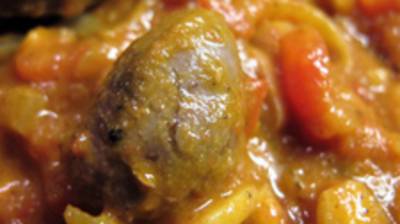Kinshasa, Académie des Beaux-Arts
Scene 4
In a mist of blueish-grey gnats buzzing around in the hard light of neon bulbs, he found the sweetest passion fruit ever and slurped up its pulp. It was juicy and sour-n-spicy like the meat he had eaten the previous evening in a restaurant in «Bloc». He had not been able to tell what sort of meat it had been; when he had inquired, the waitress had mentioned beef, then pork, and in the end, veal.
The only meat on offer that Maille had seen during his drive through Kinshasa was that of goat: big, long shanks of flesh suspended from ceiling hooks in makeshift market stalls. The meat looked fresh: so fresh that Maille was sure that the goat had been slaughtered at the very place. The goatherd or butcher seemed to have managed the task with a knife that was clearly not the sharpest in the bazaar – working on a sheet of newspaper on the floor. With the help of some wooden sticks and a towel, he had erected a sort of screen around his ‹chopping table›, which served to keep out inquisitive glances – or perhaps the flies. The world's tiniest slaughterhouse, thought Maille.
Meat was an absolute luxury in this land and, even for western customers, expensive. A freshly slaughtered goat, even if it was laid out on a scrap of newspaper, was a festive sight.
Menu Maille
Even when there is no TV chef smiling at them, dried shrimps and deep-frozen chicken hearts are the ingredients of a menu that one can dream of, most certainly when one is sitting around as a secret agent in the Congo, not knowing what one should say about it:
- Sauce aux Crevettes (Shrimp and peanut butter sauce)
- Coeurs de Poulet à la Moambe (Chicken hearts with palm fruit sauce)
- Tapioca Cream (with coconut and passion fruit)








